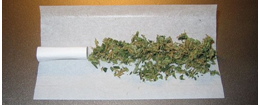
What kinds of drugs are Americans using? Here is a list of the 10 most popular.
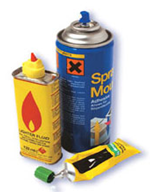 #10 – Solvents
#10 – Solvents
Inhaling or “huffing” solvents is a particularly lethal form of drug abuse. Solvents (glue, aerosols, nail polish, lighter fluid, gasoline, paint and similar products) are legal and readily obtained from hardware, grocery and discount department stores and can be purchased cheaply. Users experience an immediate high that causes them to feel giddy, outgoing and confident. However, consumers of these substances can also become reckless and violent. Long-term inhalation of these chemicals can damage the brain, heart, lungs, kidneys and liver.
#9 – Psychedelic Mushrooms
 Hallucinogenic mushrooms, popular and natural psychedelics, have been used in society, culture and religion for thousands of years. Their active ingredients, psilocybin and psilocin, cause a hallucinatory experience which, in some tribal cultures, is considered to be a religious experience. They were made illegal by the Psychotropic Substances Act of 1978.
Hallucinogenic mushrooms, popular and natural psychedelics, have been used in society, culture and religion for thousands of years. Their active ingredients, psilocybin and psilocin, cause a hallucinatory experience which, in some tribal cultures, is considered to be a religious experience. They were made illegal by the Psychotropic Substances Act of 1978.
Users begin to feel the effects approximately 20 minutes after consumption of the mushrooms. They produce altered perception of time and an inability to differentiate between fantasy and reality. A bad trip can produce feelings of intense fear and paranoia lasting up to ten hours. Long term use can cause psychosis, impaired memory, heart problems and flashbacks.
#8-Opium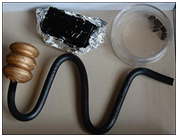
The sap of the opium poppy has extremely powerful narcotic qualities. It is a highly-addictive pain killer and can be smoked, eaten or dissolved in alcohol and turned into a drink (laudanum). Opium consumption results in a sense of emotional detachment, absence of pain and stress and altered mood and mental processes, inability to concentrate, and death. Addition occurs very rapidly, sometimes within weeks.
#7 – LSD
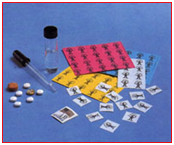 LSD or Lysergic Acid Diethylamide is arguably the most powerful known hallucinogenic drug. One to two hours after ingesting this drug, users experience heightened visual awareness, enhancement of sounds and alterations of physical sensations. A user may feel several different emotions simultaneously or swing rapidly from one emotion to another. Some users may experience spontaneous “flashbacks” during which they feel the effects of the drug without having recently consumed it. LSD is not considered to be an addictive drug because it does not produce compulsive drug-seeking behavior.
LSD or Lysergic Acid Diethylamide is arguably the most powerful known hallucinogenic drug. One to two hours after ingesting this drug, users experience heightened visual awareness, enhancement of sounds and alterations of physical sensations. A user may feel several different emotions simultaneously or swing rapidly from one emotion to another. Some users may experience spontaneous “flashbacks” during which they feel the effects of the drug without having recently consumed it. LSD is not considered to be an addictive drug because it does not produce compulsive drug-seeking behavior.
#6 – Barbiturates / Benzodiazepines
 These highly-addictive prescription sedatives have been around since the 19th century. Consumers experience dulled, slow thinking, emotional instability, irritation, antagonism, slurring of speech, poor physical coordination and confusion. Since barbiturates and benzodiazepines suppress the central nervous system, over consumption can result in death.
These highly-addictive prescription sedatives have been around since the 19th century. Consumers experience dulled, slow thinking, emotional instability, irritation, antagonism, slurring of speech, poor physical coordination and confusion. Since barbiturates and benzodiazepines suppress the central nervous system, over consumption can result in death.
The body quickly builds up a tolerance to these drugs and a higher dosage is needed to maintain the same effect. A habitual user who suddenly stops using these drugs will experience anxiety, insomnia, tremors and even delirium and seizures.
#5 – Amphetamines
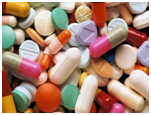 Amphetamines, commonly called “speed,” are a class of prescription drugs that increase dopamine and serotonin in the brain. This results in feelings of euphoria, mental focus, increased energy and a greatly reduced need for sleep. Use of these drugs can also result in feelings of euphoria, excitement, superiority over others, nervousness, anxiety, agitation, panic, hallucinations, irritability, hostility and aggression.
Amphetamines, commonly called “speed,” are a class of prescription drugs that increase dopamine and serotonin in the brain. This results in feelings of euphoria, mental focus, increased energy and a greatly reduced need for sleep. Use of these drugs can also result in feelings of euphoria, excitement, superiority over others, nervousness, anxiety, agitation, panic, hallucinations, irritability, hostility and aggression.
High doses can lead to “amphetamine psychosis” which is characterized by paranoid delusions and bizarre, aggressive or violent behavior. In some cases these drugs can produce seizures, stroke and coma.
#4 – Ecstasy
MDMA or Ecstasy is a synthetic drug with amphetamine-like and hallucinogenic 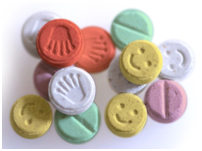 properties. It is classified as a stimulant. Users report experiencing a sense of closeness and a desire to touch others. Additional effects include involuntary teeth clenching, loss of inhibition, nausea, blurred vision, chills, sweating, increased heart rate and blood pressure. Seizures are also possible. Heart failure has been reported in some ecstasy-related deaths.
properties. It is classified as a stimulant. Users report experiencing a sense of closeness and a desire to touch others. Additional effects include involuntary teeth clenching, loss of inhibition, nausea, blurred vision, chills, sweating, increased heart rate and blood pressure. Seizures are also possible. Heart failure has been reported in some ecstasy-related deaths.
Using ecstasy repeatedly may result in damage to cells that produce serotonin which regulates mood, appetite, pain, learning and memory. Some research suggests ecstasy can impair memory.
#3 – Cocaine and Crack
 Cocaine, called the “caviar of street drugs” due to its high price, is derived from the coca plant. Users report feeling an increased sense of energy, alertness, supremacy and an extremely elevated mood. Cocaine use also produces irritability, paranoia, restlessness and anxiety. Signs of cocaine use include dilated pupils, high levels of energy and activity along with excited and exuberant speech. Cocaine use results in more US emergency room visits than any other illegal drug.
Cocaine, called the “caviar of street drugs” due to its high price, is derived from the coca plant. Users report feeling an increased sense of energy, alertness, supremacy and an extremely elevated mood. Cocaine use also produces irritability, paranoia, restlessness and anxiety. Signs of cocaine use include dilated pupils, high levels of energy and activity along with excited and exuberant speech. Cocaine use results in more US emergency room visits than any other illegal drug.
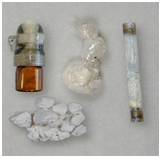 It harms the brain, heart, blood vessels, lungs, and can cause sudden death. Crack, is the most powerful, and riskiest form in which cocaine exists. It comes in solid blocks (crystals) which are heated and smoked. Crack, in contrast to the powdered form of cocaine, is extremely cheap to buy which has contributed to its wide-spread use. A user can become addicted after his or her first time.
It harms the brain, heart, blood vessels, lungs, and can cause sudden death. Crack, is the most powerful, and riskiest form in which cocaine exists. It comes in solid blocks (crystals) which are heated and smoked. Crack, in contrast to the powdered form of cocaine, is extremely cheap to buy which has contributed to its wide-spread use. A user can become addicted after his or her first time.
#2 – Heroin
 Heroin is a highly addictive opiate. It is a depressant and interferes with the body’s ability to sense pain. It can be injected in to a vein, (mainlined). It can also be injected into a muscle, smoked, mixed with marijuana or tobacco, inhaled in smoke form or snorted. Users initially experience euphoria followed by an alternately wakeful and drowsy state called nodding. Heroin use results in a clouding of mental functioning, slowed and slurred speech, a slow gait, constricted pupils, droopy eyelids and impaired night vision.
Heroin is a highly addictive opiate. It is a depressant and interferes with the body’s ability to sense pain. It can be injected in to a vein, (mainlined). It can also be injected into a muscle, smoked, mixed with marijuana or tobacco, inhaled in smoke form or snorted. Users initially experience euphoria followed by an alternately wakeful and drowsy state called nodding. Heroin use results in a clouding of mental functioning, slowed and slurred speech, a slow gait, constricted pupils, droopy eyelids and impaired night vision.
Pronounced withdrawal symptoms may result if use is reduced or stopped. Users may experience, in addition to a craving for the drug, muscle and bone pain, insomnia, diarrhea, vomiting, seizures and other symptoms. Sudden withdrawal, as with an overdose of this drug, can be fatal.
#1 – Cannabis
Cannabis or marijuana (also known as grass, weed, hemp or pot) is the most popular of all 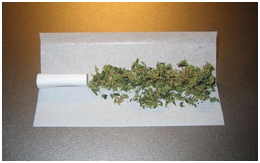 recreational drugs. It is usually smoked in hand-rolled cigarette (joints, doobies) or in special water pipes (bongs).
recreational drugs. It is usually smoked in hand-rolled cigarette (joints, doobies) or in special water pipes (bongs).
Use of cannabis can result in talkativeness, drowsiness, loss of inhibitions, increased appetite, loss of coordination, bloodshot eyes, anxiety, paranoia, and dryness of mouth, nose and throat.


